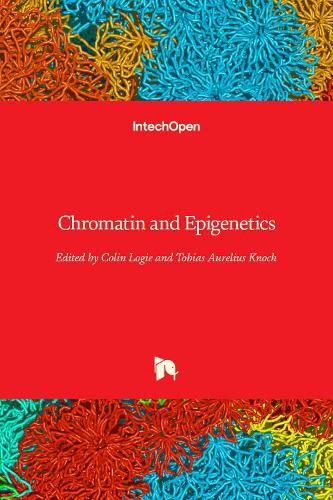Readings Newsletter
Become a Readings Member to make your shopping experience even easier.
Sign in or sign up for free!
You’re not far away from qualifying for FREE standard shipping within Australia
You’ve qualified for FREE standard shipping within Australia
The cart is loading…






Genomics has gathered broad public attention since Lamarck put forward his top-down hypothesis of ‘motivated change’ in 1809 in his famous book Philosophie Zoologique and even more so since Darwin published his famous bottom-up theory of natural selection in The Origin of Species in 1859. The public awareness culminated in the much anticipated race to decipher the sequence of the human genome in 2002. Over all those years, it has become apparent that genomic DNA is compacted into chromatin with a dedicated 3D higher-order organization and dynamics, and that on each structural level epigenetic modifications exist. The book Chromatin and Epigenetics addresses current issues in the fields of epigenetics and chromatin ranging from more theoretical overviews in the first four chapters to much more detailed methodologies and insights into diagnostics and treatments in the following chapters. The chapters illustrate in their depth and breadth that genetic information is stored on all structural and dynamical levels within the nucleus with corresponding modifications of functional relevance. Thus, only an integrative systems approach allows to understand, treat, and manipulate the holistic interplay of genotype and phenotype creating functional genomes. The book chapters therefore contribute to this general perspective, not only opening opportunities for a true universal view on genetic information but also being key for a general understanding of genomes, their function, as well as life and evolution in general.
$9.00 standard shipping within Australia
FREE standard shipping within Australia for orders over $100.00
Express & International shipping calculated at checkout
Stock availability can be subject to change without notice. We recommend calling the shop or contacting our online team to check availability of low stock items. Please see our Shopping Online page for more details.
Genomics has gathered broad public attention since Lamarck put forward his top-down hypothesis of ‘motivated change’ in 1809 in his famous book Philosophie Zoologique and even more so since Darwin published his famous bottom-up theory of natural selection in The Origin of Species in 1859. The public awareness culminated in the much anticipated race to decipher the sequence of the human genome in 2002. Over all those years, it has become apparent that genomic DNA is compacted into chromatin with a dedicated 3D higher-order organization and dynamics, and that on each structural level epigenetic modifications exist. The book Chromatin and Epigenetics addresses current issues in the fields of epigenetics and chromatin ranging from more theoretical overviews in the first four chapters to much more detailed methodologies and insights into diagnostics and treatments in the following chapters. The chapters illustrate in their depth and breadth that genetic information is stored on all structural and dynamical levels within the nucleus with corresponding modifications of functional relevance. Thus, only an integrative systems approach allows to understand, treat, and manipulate the holistic interplay of genotype and phenotype creating functional genomes. The book chapters therefore contribute to this general perspective, not only opening opportunities for a true universal view on genetic information but also being key for a general understanding of genomes, their function, as well as life and evolution in general.